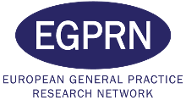Evidence of POCUS applications in primary healthcare at the European level and a prospective POCUS study in patients with acute abdominal pelvic pain in family medicine practice
Mihai Iacob
Keywords: POCUS applications, POCUS curriculum, POCUS screening, POCUS survey, core POCUS curriculum, clinical ultrasonography
Background:
Point-of-care-ultrasonography performed by the clinician, is an important tool to guide and improve case management for early diagnosis and treatment. It represents an extension of the clinical examination of the physician, to achieve an accurate positive or differential diagnosis.
Research questions:
What is the diagnostic accuracy and which POCUS applications can be used in primary healthcare?
Method:
This study aimed to establish some POCUS applications for family doctors. All these presented a typical ultrasound pattern and simple diagnostic criteria. We brainstormed and conducted an online-survey on what POCUS applications can be used in primary care. We designed a questionnaire and distributed it to family physicians from the WONCA-Networks. We performed a POCUS screening on 3400 patients with acute-abdominal-pain who were examined first time by the family physician and afterward by the specialist. Each patient followed an ultrasound-protocol and was archived in an e-database. We made a descriptive-statistic and analyzed the POCUS-screening data, and the inter-rater-agreement using Cohen’s-kappa-coefficient.
Results:
We had 450 family physicians and family medicine residents as respondents to this POCUS survey from all European countries.
We made a comparative analysis of their answers and found out which POCUS applications are of great interest to European family doctors.
We present the results of the survey launched by EUVEKUS regarding the education and future POCUS curriculum in primary healthcare. The opinions of over 86% of the respondents were in favor of using POCUS.
The results of our second prospective study on the patients with abdominal-pelvic pain were: an accuracy:94.54%, sensitivity:96.43%, and specificity:91.16%(p<0.001). The agreement between US-results performed by a trained-GP versus an emergency specialist in the abdominal emergency diagnosis was:91%(k=0.86;95%CI:0.79-0.91).
Conclusions:
Ultrasonography should be a diagnosis tool, besides the stethoscope, in the GP’s office. Early and accurate diagnosis can help to save many patients in primary care, based on notions of good clinical practice (GCP).
Points for discussion:
How can we increase the accuracy of diagnosis in primary healthcare?
Could ultrasound along with clinical examination help in decision-making and case management of pathology in primary healthcare?
What kind of the PoC-US applications may be required in family medicine practice?
#17

